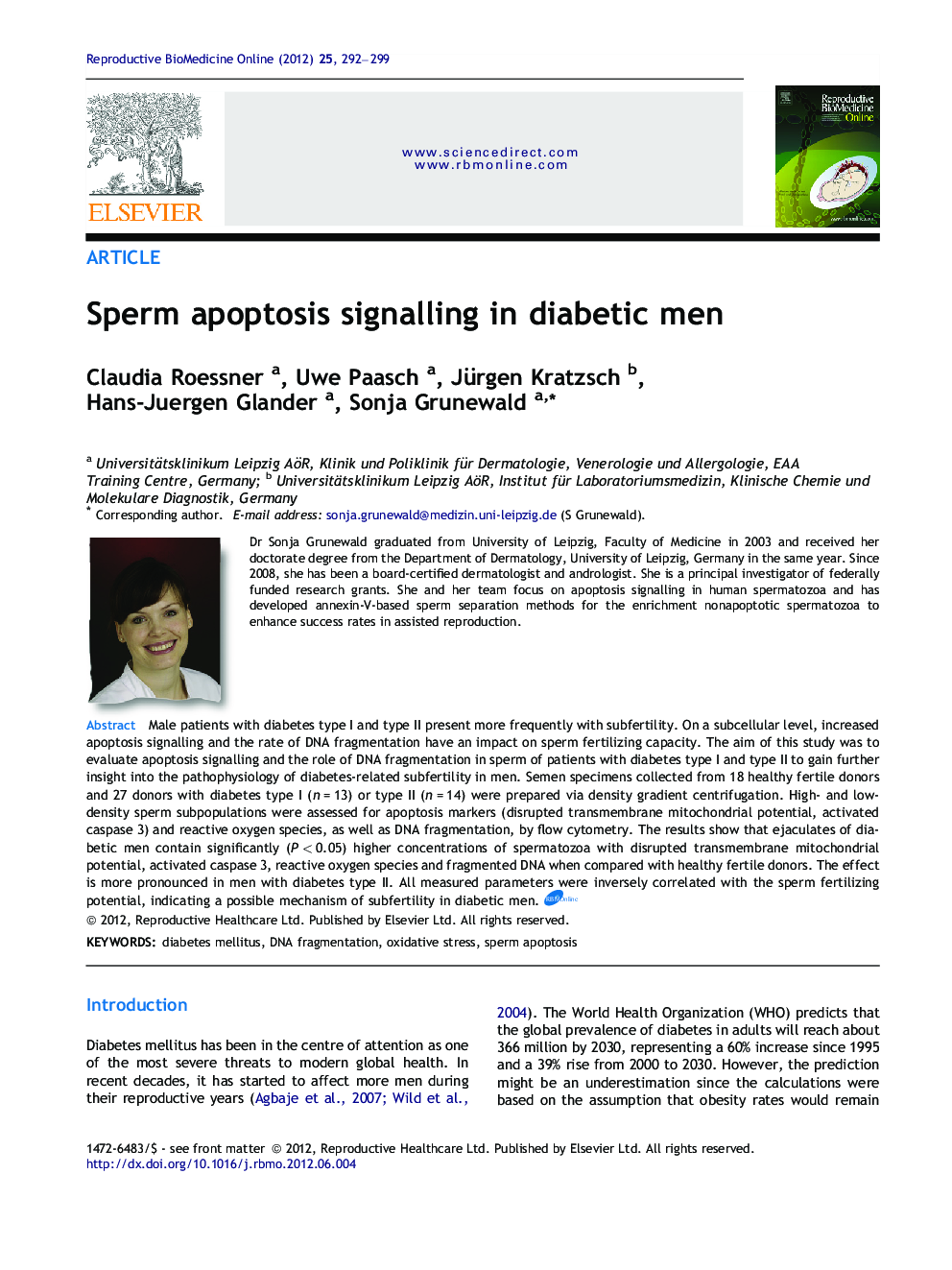| Article ID | Journal | Published Year | Pages | File Type |
|---|---|---|---|---|
| 3970644 | Reproductive BioMedicine Online | 2012 | 8 Pages |
Male patients with diabetes type I and type II present more frequently with subfertility. On a subcellular level, increased apoptosis signalling and the rate of DNA fragmentation have an impact on sperm fertilizing capacity. The aim of this study was to evaluate apoptosis signalling and the role of DNA fragmentation in sperm of patients with diabetes type I and type II to gain further insight into the pathophysiology of diabetes-related subfertility in men. Semen specimens collected from 18 healthy fertile donors and 27 donors with diabetes type I (n = 13) or type II (n = 14) were prepared via density gradient centrifugation. High- and low-density sperm subpopulations were assessed for apoptosis markers (disrupted transmembrane mitochondrial potential, activated caspase 3) and reactive oxygen species, as well as DNA fragmentation, by flow cytometry. The results show that ejaculates of diabetic men contain significantly (P < 0.05) higher concentrations of spermatozoa with disrupted transmembrane mitochondrial potential, activated caspase 3, reactive oxygen species and fragmented DNA when compared with healthy fertile donors. The effect is more pronounced in men with diabetes type II. All measured parameters were inversely correlated with the sperm fertilizing potential, indicating a possible mechanism of subfertility in diabetic men.Diabetes mellitus can affect male fertility. Earlier studies have proved reduced sperm motility and lower DNA integrity in germ cells of diabetic patients. It was postulated that higher levels of oxidative stress may contribute to this findings. However, until now the pathophysiology of diabetes-related male subfertility is not fully understood. Our study showed for the first time that apoptosis signalling, measured by disrupted transmembrane mitochondrial potential and activated caspase 3, is significantly increased in sperm from males with diabetes type-I and type-II. Particularly, a disrupted transmembrane mitochondrial potential contributes to the reduced sperm motility. Together with the increased presence of intracellular reactive oxygen species and higher levels of sperm DNA fragmentation, several subcellular factors are now available to explain subfertility in diabetic males.
